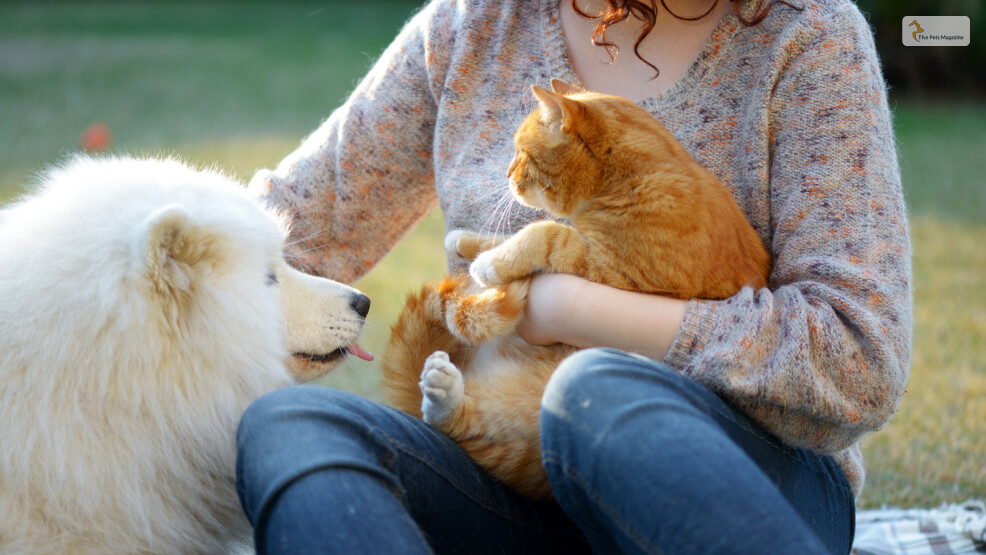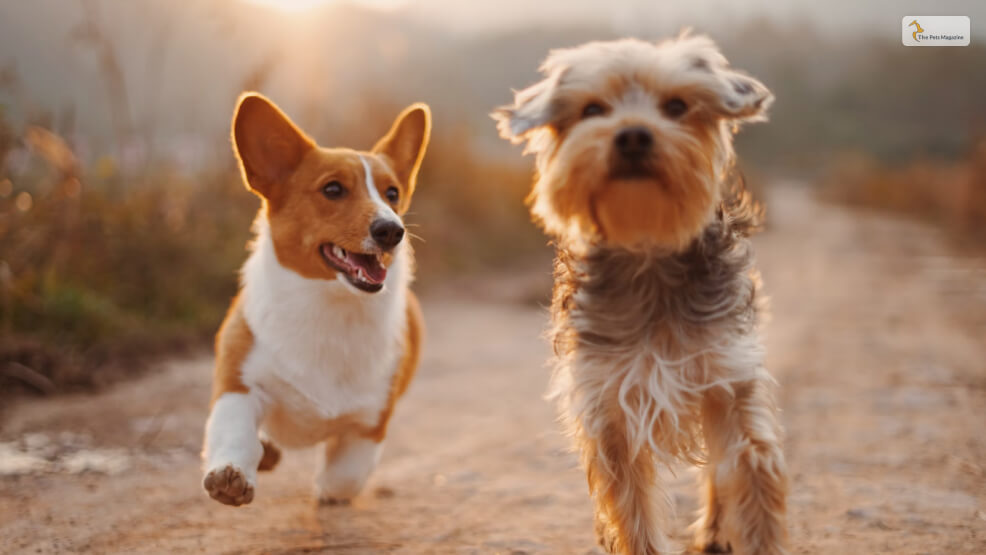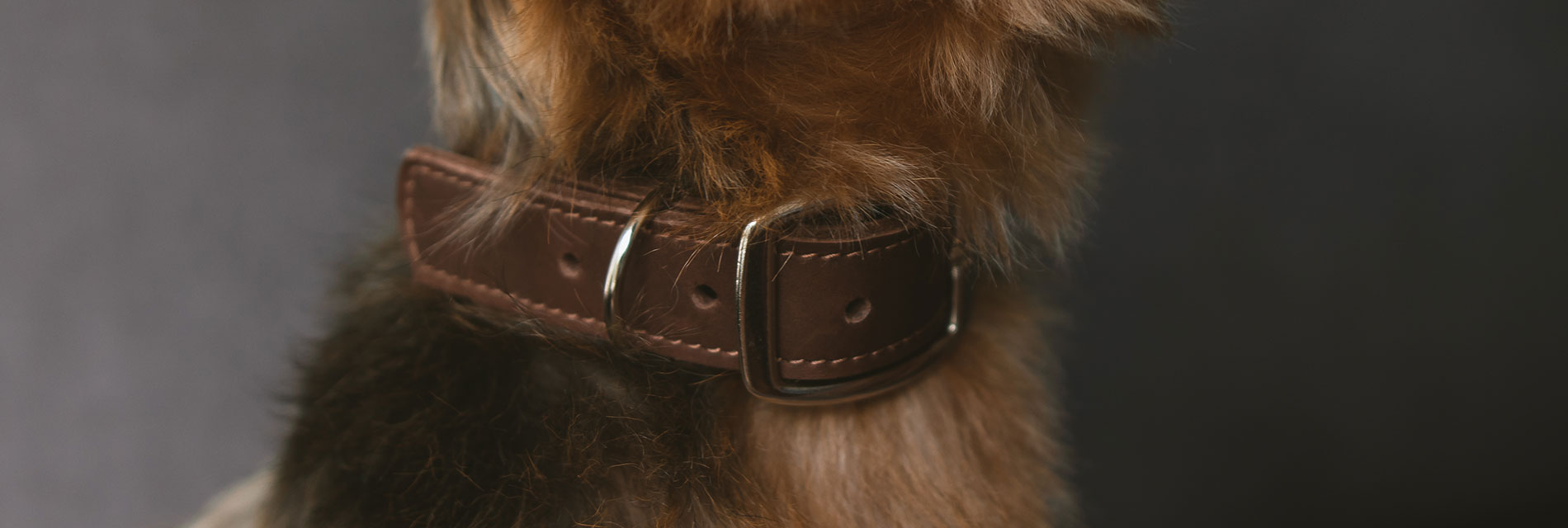How To Introduce Your Dog To Other Pets


A new dog can be an excellent companion to add to the family. Likewise, introducing your dog to other pets can be an exciting and rewarding experience for your furry friend and you. However, it can also be a bit nerve-wracking, especially if your dog has not had much exposure to other animals before.
Whether bringing a new pet into your home or introducing your dog to a friend’s pet, proper introductions ensure everyone stays safe and comfortable.
Therefore, it’s essential to plan each step of introducing your dog to other pets. Notably, while dog interactions are a process, a successful first interaction can help your dog build a healthier long-term relationship with the other pets. This article outlines the ideal ways to do the introduction.
Factors To Consider Before Introduction

There are some factors to consider before introducing your dog to other pets.
- The temperament of your dog: Consider your dog’s personality, history, and temperament before introducing them to other pets. If your dog is aggressive or has a history of fighting with other animals, you may need to take extra precautions and seek professional help.
- Age and size of the other pet: Age and size differences between the pets can be a factor in determining how well they will get along. For example, you should be extra cautious when introducing your dog to a chinchilla. Chinchillas are very skittish, and dogs may see them as prey. Therefore, the pets may need more time first to get used to having each other around.
- Breed of the other pet: Some dog breeds may have a higher prey drive than others and may be more likely to chase or attack other animals. It’s important to research the breed of the other pet and consider their tendencies.
- The environment: Introducing pets in a neutral, controlled environment is usually best. This can help to minimize territorial behavior and prevent any one pet from feeling threatened or uncomfortable.
- Supervision: Supervision is key during introductions, particularly in the early stages. You should always keep a close eye on the pets and be ready to intervene if necessary.
- Training: Make sure your dog has basic obedience training and is responsive to commands such as ‘sit’ and ‘stay.’ This can help to keep them calm and prevent any negative behavior.
- The health of the pets: It’s important to ensure that all pets involved in the introduction are up-to-date on their vaccinations and are in good health. Sick or injured pets may be more irritable or aggressive than usual.
The above factors can help you develop a successful introduction plan. You can use a cage as a barrier during their first encounters, then change tactics once they’re calm and settled around each other. However, remember not to leave the pets alone, even if they get along.
Ways To Introduce Your Dog To Other Pets

Here are some tips for introducing your dog to other pets:
Choose A Neutral Territory To Make Introductions
Introducing your dog to other pets for the first time in neutral territory is recommended, like the outdoors. It would be best to allow the pets to roam separately on a leash at a safe distance where they can see each other but aren’t provoked. While you walk your dog, you can ask someone else to walk the other pet.
You should also remove any items that may cause a scuffle. That includes dog toys, bones, and empty food bowls. It’s a good sign if your dog remains relaxed and doesn’t display negative behaviors when seeing the other pet.
In that case, you can reduce the distance between the pets as you closely monitor how they respond. You can also reward them with high-value treats for exhibiting social behaviors towards one another.
Allow The Pets To Interact Off-Leash
If the pets respond well while on a leash, try letting them interact freely. At this point, you should watch out for any signs of invitations to connect. For instance, the pets may sniff one another or start playing. If you should repeat the sessions daily until you’re confident the pets are completely comfortable around each other.
If a serious altercation occurs, separating the pets immediately is best to give them a few days’ breaks. Note that stress hormones may take a while before they return to normal, so if you force the pets to meet again too soon, the altercations may worsen.
That said, it’s best to give your dog ample time before you continue building the relationship from the previous step.
Allow Your Dog To Determine The Pace Of The Introduction
It’s possible that your dog may instantly be excited to meet the other pets and play during the first encounter. There are also instances where it may require more time before it gets comfortable enough. Therefore, monitor the pets and allow them to interact at their own pace. If the introduction doesn’t go well, you can ask a professional trainer or animal behaviorist to help with the introductions.
What Are Some Signs That Indicate the Pets Are Completely Comfortable Around Each Other?

When pets feel comfortable and at ease around each other, it’s a wonderful sight. You will be able to understand from both pets’ body language if they are comfortable around each other or not. The very first thing you will notice is that both of them have a relaxed posture. There will also be happy tail wags, which are a classic sign of contentment and comfort.
Here are some common signs that indicate a harmonious relationship:
- Mutual grooming: This is a common bonding behavior, especially among dogs.
- Sleeping together: Pets that feel safe and secure often choose to sleep together.
- Playful interactions: Friendly play, such as chasing or wrestling, is a positive sign.
- Sharing resources: Pets that are comfortable with each other will often share food, toys, or sleeping spots.
- Lack of aggression or avoidance: There should be no signs of aggression, such as growling, barking, or snapping.
- Reduced anxiety: Pets that are comfortable around each other may exhibit fewer signs of anxiety, such as excessive barking or hiding.
- Increased confidence: Both pets should appear more confident and relaxed in each other’s presence.
Signs of Stress or Discomfort During Pet Introductions
When introducing new pets, it’s essential to watch for signs of stress or discomfort. These can include:
- Stiffness or rigidity: Pets may become tense or rigid, indicating discomfort.
- Avoidance: They may try to avoid the other pet or hide.
- Yawning or licking: These can be signs of anxiety or stress.
- Dilated pupils: Dilated pupils can be a sign of fear or arousal.
- Growling or barking: These are common signs of aggression or fear.
- Whining or meowing: These can indicate stress or discomfort.
- Excessive grooming: Excessive grooming can be a sign of stress or anxiety.
- Loss of appetite: Pets that are stressed may lose their appetite.
- Increased urination or defecation: These can be signs of anxiety or fear.
If you notice any of these signs, it’s important to slow down the introduction process and provide your pets with a safe and comfortable environment. Consider consulting with a veterinarian or animal behaviorist for guidance.
Right Strategies and Tools For Pet Introductions
The following are some tools to use during pet introductions:
- Use rewards for positive reinforcement: You can use treats, playtime, and praise to reward positive behavior. It’s especially helpful if you have a nervous dog, as it can help them feel more relaxed. However, make sure the rewards you use don’t cause competition among pets.
- Use pheromones: These are chemical substances released into the environment to influence the behavior of animals positively. For example, Adaptil is used to calm dogs and Feliway for cats. Since they cause no harm to the pets, you can use the substances to make them feel more relaxed during their encounter. Even so, you shouldn’t rub or spray the chemicals directly on the pet.
Additionally, it’s best to tire out your dog before the introduction so it can blow off some energy. You can take it for a long walk or arrange a play session.
Understand Each Pet’s Body Language
While the end goal of an introduction is for the pets to establish a long-term relationship, it’s also crucial to consider their immediate safety. Ideally, if the introduction goes wrong and your dog gets aggressive, it may injure the other animal or people around. Therefore, it’s critical to watch each pet’s body language and reactivity the entire time.
Specific body postures may indicate a wary response or defensive behavior. For example, growling, teeth-baring, hair standing up, or a prolonged stare. If you notice such reactions, you can calmly interrupt the introduction by interesting your dog in something else.
Notably, measuring every step of the introduction using a spotlight system is good. You can use the following colors:
- Red: The pets are reacting aggressively or showing extreme fear. If there’s no improvement, stop the introduction, and consider regrouping after a few days or changing your tactics.
- Yellow: There are a few concerns with how the pets interact. In such situations, you should tread cautiously. Consider taking a break and repeating the step later.
- Green: The pets have interacted well and show positive reactions. That means your dog has succeeded in the introduction step.
Additionally, it’s best to introduce your dog to one pet at a time for easy management.
How you introduce your dog to other pets can set the tone for their whole relationship. Therefore, the above tips help your dog get along with other pets beginning with the first meeting. Most importantly, ensure you monitor each step of the process to ensure a successful first encounter and a lifelong friendship.









Leave A Comment